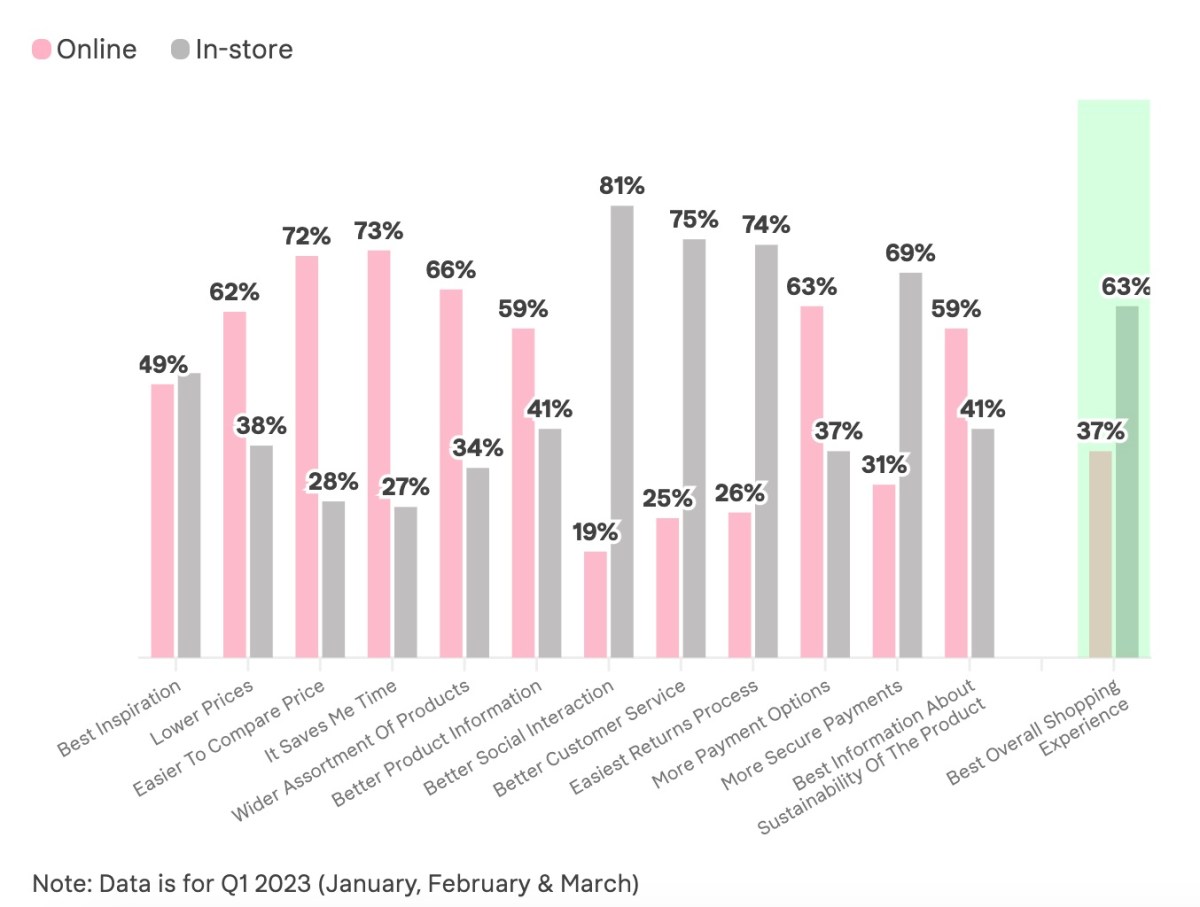Australians value the in-store experience more than online, according to new research from retail bank, payments and shopping service, Klarna, with eight in 10 (81%) saying it’s more social and interactive, three-quarters (75%) stating it is easier for returns and almost two-thirds (63%) suggesting it’s a better overall shopping experience.
However, 73% believe online shopping saves more time and 72% prefer online shopping to compare prices, while 63% prefer more variety in payment options and 62% state that online has lower prices.
Shoppers prefer in-store experiences for groceries, pharmaceuticals and home and garden products, while shoppers choose online channels for entertainment, electronics, clothing and shoes. Since 2021, preference for online grocery shopping has increased by 19%, pharmaceuticals by 17% and home and garden by 21%.
The research revealed that the ACT is the state with the most online shoppers per capita, closely followed by NSW and VIC. However, since 2022 WA has led with the biggest increase in online shoppers.
The most popular time for Australians to shop online is 1pm, with the most popular days being Wednesday and Thursday. More than half (55%) prefer Buy Now Pay Later (BNPL) over credit cards. The most popular payment methods include mobile phones (38%), physical cards (34%) and cash (21%).
The research also uncovered a rise in upcycling fashion with one in three buying a second-hand item in the past 30 days. One in two say they buy second-hand because it’s better for the environment, with 82% stating they buy it because it’s cheaper.
There is also growing demand for brands to be more environmentally responsible with over 40% stating it’s important for retailers to act in an environmentally friendly way, while almost 30% actively seek brands that are ethical and sustainable and more than one-quarter (27%) consider the impact of delivery options when shopping online.
Further, almost eight in 10 value brands that use recycled and sustainable materials and 60% want brands to list the environmental impact of their products to the public.

